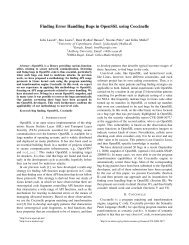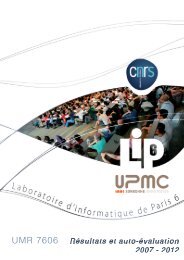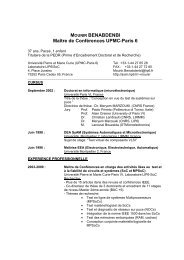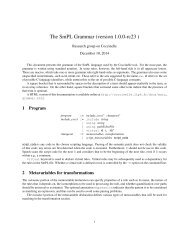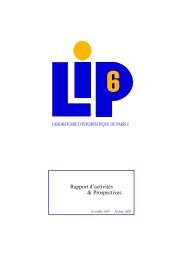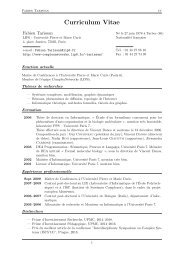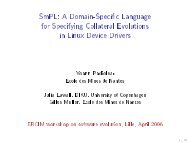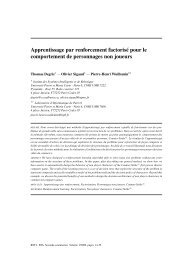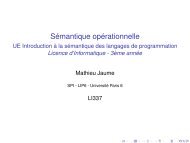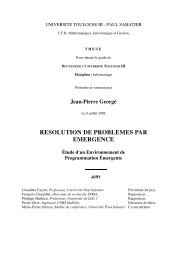Proceedings [PDF] - Measurement and Analysis of P2P Activity ...
Proceedings [PDF] - Measurement and Analysis of P2P Activity ...
Proceedings [PDF] - Measurement and Analysis of P2P Activity ...
Create successful ePaper yourself
Turn your PDF publications into a flip-book with our unique Google optimized e-Paper software.
International Conference Advances in the <strong>Analysis</strong> <strong>of</strong> Online Paedophile <strong>Activity</strong> Paris, France; 2-3 June, 2009<br />
Child pornography: the exploitation <strong>and</strong> abuse <strong>of</strong> children.<br />
Ethel Quayle <strong>and</strong> Terry Jones<br />
Abstract<br />
While there has been considerable investment in the detection <strong>of</strong> online sexual <strong>of</strong>fending against<br />
children there has been little interest in the children portrayed in the images. This is reflected in the<br />
paucity <strong>of</strong> research in this area <strong>and</strong> the fact that so few children have ever been identified. This<br />
presentation examines the existing literature <strong>and</strong> presents new data to explore both the nature <strong>of</strong> the<br />
images <strong>and</strong> what they might tell us about the children who are both abused <strong>and</strong> exploited.<br />
In recent years there has been a considerable investment in the detection <strong>of</strong> online sexual<br />
<strong>of</strong>fending against children <strong>and</strong> the provision <strong>of</strong> specialized treatment facilities. In part this was in<br />
response to a dramatic increase in the number <strong>of</strong> such people entering the criminal justice system. For<br />
example, in the UK Middleton (2009, p 7) reports that, ‘For Engl<strong>and</strong> <strong>and</strong> Wales in 1999, there were<br />
238 convictions for publication, possession or distribution <strong>of</strong> obscene matter <strong>and</strong> indecent<br />
photographs <strong>of</strong> children. By 2005 they had reached 1,296 (Hansard, 2008)*an almost 500% increase<br />
in convictions. The total sexual <strong>of</strong>fence convictions (all sexual <strong>of</strong>fences) in 2005 was 4,800 (Home<br />
Office, 2006). Therefore, in this year convictions for internet-related sexual <strong>of</strong>fences accounted for<br />
almost one-third <strong>of</strong> all sexual <strong>of</strong>fence convictions. This level <strong>of</strong> convictions had a significant effect on<br />
the proportion <strong>of</strong> sex <strong>of</strong>fenders entering or waiting to commence treatment programmes, leading to<br />
questions <strong>of</strong> suitability <strong>of</strong> the treatment programme content, appropriate treatment dosage <strong>and</strong><br />
possible ‘‘contamination effects’’ <strong>of</strong> exposure to contact child sex <strong>of</strong>fenders’. The emergence <strong>of</strong> this<br />
population has also resulted in an increased body <strong>of</strong> research that explores the underlying aetiology<br />
<strong>and</strong> contexts associated with online sexual <strong>of</strong>fences against children (for example, Elliott <strong>and</strong> Beech,<br />
2009). There has, however, been little published literature that relates to the children within these<br />
images <strong>and</strong> interest has focused largely on populations that predate the Internet. This short paper<br />
seeks to address this by turning our focus back to child pornography as it relates to victimisation.<br />
Online sexual <strong>of</strong>fences against children are <strong>of</strong>ten associated with downloading, trading or the<br />
production <strong>of</strong> child pornography (Quayle, 2008) <strong>and</strong> while interest in child pornography is not new<br />
(Lanning, 2000), it is the case that with each technological advance we have seen an increase in the<br />
availability <strong>of</strong> such materials, <strong>and</strong> this has been most noticeable in relation to the advent <strong>of</strong> the<br />
Internet. There are historical accounts <strong>of</strong> child pornography <strong>and</strong> its distribution, which appeared to be<br />
facilitated by the popular use <strong>of</strong> photography (Taylor <strong>and</strong> Quayle, 2003). The criminalisation <strong>of</strong> such<br />
material, however, made access both difficult <strong>and</strong> dangerous, although there was a period <strong>of</strong><br />
approximately ten years when in some European countries all pornographic materials were<br />
decriminalised. In part this appears to reflect an absence <strong>of</strong> concern with those involved in the<br />
production <strong>of</strong> the material (both children <strong>and</strong> adults) <strong>and</strong> more a concern with the consumer. In<br />
Denmark the anti-pornography laws were repealed in 1969 <strong>and</strong> Sweden then followed in 1971, <strong>and</strong><br />
this resulted in a booming trade in child pornography, with the appearance <strong>of</strong> material in the media<br />
<strong>and</strong> in ordinary shops (Schuijer <strong>and</strong> Rossen, 1992). Such decriminalisation <strong>of</strong> child pornography <strong>and</strong><br />
its subsequent ease <strong>of</strong> both production <strong>and</strong> distribution arguably resulted in the depathologising <strong>of</strong><br />
some interests <strong>and</strong> behaviors, or at least a decoupling <strong>of</strong> some <strong>of</strong> our assumptions between the nature<br />
<strong>of</strong> sexual interest in children <strong>and</strong> the notion <strong>of</strong> sexual harm (Quayle, 2008). However, it is <strong>of</strong> interest<br />
that much <strong>of</strong> the commercial production <strong>of</strong> child pornography during this period involved images <strong>of</strong><br />
children that were produced in a domestic context <strong>and</strong> sent on to magazine editors in exchange for<br />
57


![Proceedings [PDF] - Measurement and Analysis of P2P Activity ...](https://img.yumpu.com/32964521/57/500x640/proceedings-pdf-measurement-and-analysis-of-p2p-activity-.jpg)

